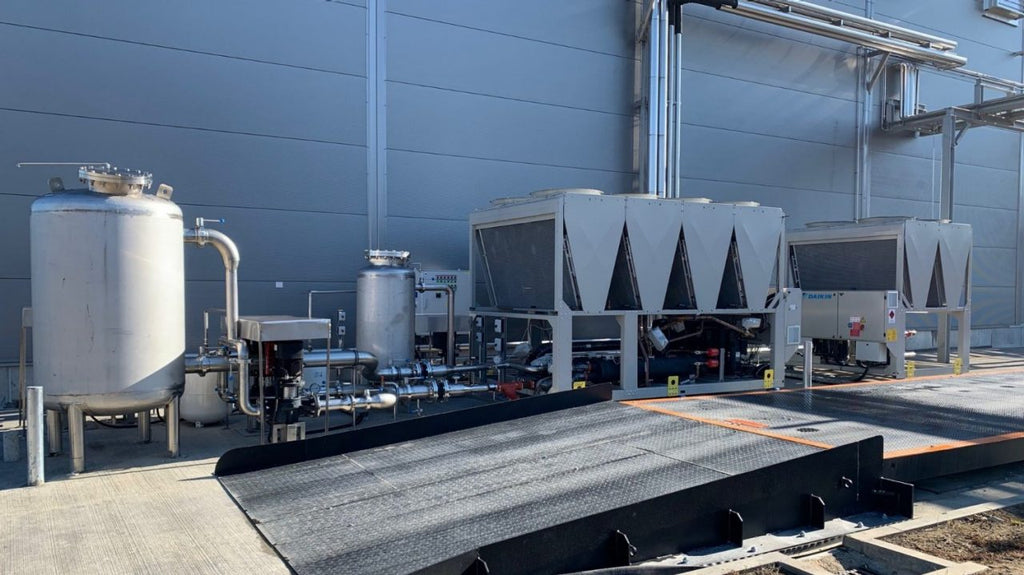
Understanding the Basics of HVAC Construction
Almost everyone in the construction world, and many outside of it, knows that HVAC stands for the heating, cooling and ventilation system within a building. The purpose of any HVAC system is to ensure that the temperature inside any building is comfortable for those in it. This means heating the building during the coldest months of the year and cooling it when it gets hot outside.
For heating, an HVAC system uses gas, oil, coal, or electricity to provide heat, while cooler air is provided by a chiller, gas or electric air conditioner, and an electric heat pump. Everyone in the construction field must understand the basics of air conditioning to fully understand any of the HVAC systems available.
Here are the steps in any cooling cycle for an HVAC unit:
- The low-pressure refrigerant is compressed by the unit's compressor, which will increase the temperature and pressure. The amount of pressure, as well as the actual temperature, depends on the type of refrigerant used in the air conditioning section of the HVAC system.
- The condenser will then blow outside air over the refrigerant vapor, which will turn it into a liquid. This liquid is approximately twenty-five degrees higher than the temperature of the outside air, which is why the condenser always seems to be blowing hot air.
- There is an expansion valve that will change the refrigerant from its high pressure liquid to a low pressure one. This pressure change ensures that the temperature is reduced.
- The evaporator inside the HVAC system will allow hot indoor air to blow over the coils. These coils are filled with cold liquid refrigerant and the heat from the air will turn the cold liquid into a hotter gas. Often, the type of refrigerant is chosen because of the amount of heat it can pass from liquid to gas.
There are many different HVAC systems available, but some are most commonly used in the construction field. The ones that anyone in construction will see most include:
Heat Pumps
Heat pumps take heat from the air and use it for heating, while the cooling part works as described above. These are often seen as outdoor units as the compressor and condenser need to be outside to pull in air for use. This type of HVAC system will need a backup electric resistive heater because the heat pump cannot extract enough heat from the outside air when it is extremely cold outside. This type of HVAC unit is generally chosen because it is simple to install and cheaper than any other system. However, there aren't many control options and these HVAC units only last an average of seven years.
Rooftop Units
Rooftop units are also known as packaged units and sit on the roof or simply on the ground. To heat the building, a gas furnace is normally used, but it is also possible to use other types of fuel. It is possible to mix outside air with return air since these units are outside and the heated or cooled air is sent into the building through ducts. These HVAC systems are also easy to install and quite inexpensive. The downside to these systems is that there are unsightly ducts that run vertically through buildings.
Coolers
A chiller is a little different from the direct expansion systems above because they need to have cold water distributed through pipes to air cooling coils. These systems will also need a boiler to produce hot water and generate heat through the heating cycle. This is a two-pipe system that requires a system change when the building owner wants to switch from the heating option to the cooling option and then back again. These HVAC systems are quite energy efficient, but they are also expensive to install and difficult to maintain.
Heaters
Furnaces provide heat and work by burning wood, coal, gas, oil or other fuels. Direct gas heaters are an excellent option as they use fresh air and fan distribution.
Fans and Ventilation
This option does not deliver extremely cold air into a building, but will ventilate a space to remove hot air from the building. This is usually done via huge wall fans, but there are other options that work equally well.
It's not always easy to determine the size of the HVAC system you need. After all, schools and office buildings will need different amounts of air conditioning and heating per thousand square feet than a dedicated computer room or conference room.
Fortunately, there are space-specific guidelines that will allow construction workers to calculate the specific needs of the space in which they are working.
Now that everyone understands the basics of HVAC systems in the construction industry, construction workers can continue their work of finding the perfect system for the project they are currently working on.

